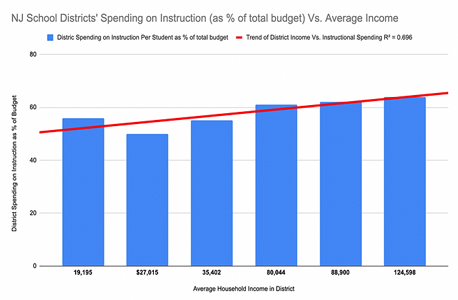The Fallacies of Statewide Statistics: Educational Inequality in NJ
On the surface, statistics of New Jersey’s youth educational system are optimistic: the state consistently takes the leads in rankings such as average test scores, graduation rates, and enrollment. However, these facts must be viewed while keeping another factor in mind – the Garden State’s rampant economic disparities.

A prime example of New Jersey’s vast inequality can be quantified by the Gini coefficient index, a system that scores a given region’s balance in wealth and income. With a rating of 0.4759, New Jersey ranks on the more severe end of the spectrum when compared to other states. This shows that aggregated statewide statistics, such as the aforementioned educational rankings, can be skewed by outliers and are not accurate measures of success.
To connect NJ’s inequality with the quality of its youth education infrastructure, there is oftentimes a direct correlation between a school district’s circumstances and setting and its direct investment into education. For example, compare the following NJ Districts: Trenton Public Schools, an urban system that serves around 15,000 students, and Toms River Regional SD, a mostly suburban district that caters to a student population that is nearly identical to that of Trenton. According to the National Center for Educational Statistics (NCES), Trenton’s total expenditures per student is greater than that of Toms River, at approximately $24,000 versus $17,000. However, when observing the components of these costs, Toms River is able to spend over 1,000 dollars (13.2%) more per student in regards to education and instruction. This gap is not unrelated to the massive difference in economic circumstances between the two districts; constituents of TPS have an average household income of $35,402, while Toms River’s records $84,044. The breakdown of NCES data shows that TPS must spend both a lower amount and proportion of their total budget on instruction in order to accommodate for other aspects of schooling, such as support, administration, food, and other services.
This pattern demonstrates itself among other districts as well: educational systems in higher-income regions are consistently able to allocate greater amounts of funding toward individual instruction for their students. This status quo directly affects both the quality of education and the breadth of opportunities available to students. While the duty of a district is not to guarantee the same outcome for each of its pupils, the field of education should be level for all youth in terms of basic access to resources.

